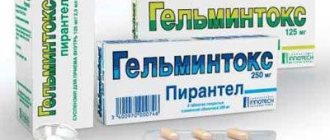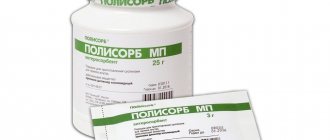Features of oil enemas
This type is carried out using oil. Use vegetable oil (for example, regular sunflower oil) or Vaseline. The essence of this procedure is to make the surface of the stool slippery. This reduces friction and allows stool to move out more easily.
Before entering the intestine, the oil must be heated to a temperature of 37 ° C. The heat relieves tension in the internal muscles and also helps move the contents to the exit. If constipation is caused by diseases of the anorectal area, heat will significantly improve the condition.
This type of enema is done before going to bed. After all, it acts quite slowly. You have to wait about 10 hours, so after the evening enema the morning relief passes. If you can’t wait that long, you need a hypertensive enema.
Side effects
Loss of intestinal flora (eg, Acidophilus gen) and metal ions (especially potassium) is mistakenly considered a side effect of enemas.
In rare cases, intestinal damage or rupture occurs as a result of overstretching of the intestine. Circulatory problems can occur in the intestinal wall. If the rinse solution is too hot, a burn may occur. This will lead to electrolyte imbalances and infectious diseases.
The question of how often an enema should be used has been critically questioned. During a cleanse, some of the intestinal bacteria, called gut flora, are washed away. Therefore, the microflora must be restored after each enema. It is recommended to use an enema only for severe constipation that cannot be treated with conservative means. Alternative medicine and naturopaths recommend using enemas more frequently. However, such a recommendation is unfounded and can cause great harm.
Features of hypertensive enema
Pear for cleansing enema
A saline solution is used to perform a hypertonic enema. To prepare it, sodium chloride is added to water. A 10 percent solution is needed. A similar effect can be obtained from a 20% magnesium solution. The composition is injected into the anus.
After this, osmotic pressure begins to rise. This process helps to attract moisture from the tissues in the affected area.
Read: Gelatin: beneficial properties, why you should use it and how to do it
The liquid saturates the stool, making it softer and more pliable. And salt helps stimulate the intestinal surface. It begins to contract and pushes out the contents. As a result, feces come out.
Experts believe that this variety should be used for proctogenic constipation. The effect can be achieved within 20 minutes.
What you need to know to relieve constipation at home
The rules for setting up an enema are described. It is worth taking them into account when performing a liberating intestinal lavage.
- A laxative enema is not considered a treatment. It is placed to relieve constipation, free the large intestine from feces, activating peristalsis. It does not directly affect the source of constipation. It is important to establish the cause of the disease before starting treatment in order to act directly on it. It is worth visiting a doctor, undergoing the necessary examination, and taking tests. Armed with the results obtained, you can count on an effective result.
- It is worth considering: all drugs related to laxatives are addictive. The intestines begin to get lazy. Especially when the products are used without interruption for 10 days. Natural atony of the intestinal muscles occurs. Enemas are also addictive. It's better not to allow this!
- The variety of laxatives on pharmaceutical markets leaves a person with a difficult choice: what to buy. Medicines have different effects on the body. It is worth purchasing a product with minimal side effects. The doctor will help you make your choice. Microlax is recognized as an excellent remedy. Even a recently born child can take it. The mentioned drug is absolutely safe.
- There are cases when administering a laxative enema or other laxatives is not recommended: there is pain in the abdominal area, and unknown discharge from the rectum. This is a serious reason to get examined.
Features of a cleansing enema
Cleansing enema gives a quick effect
This is the most reliable option. They resort to it when the previously described means do not produce a positive effect. This enema simply helps flush out feces from the intestinal cavity. It is considered more harmful to the body than the previous ones.
After all, the first two enemas stimulate the independent functioning of the intestines. And in this case, nothing is required from the body itself. Therefore, frequent use of cleansing enema threatens to reduce intestinal function.
A cleansing enema is recommended for use in cases where there are serious disruptions in the formation of feces and the movement of feces. It is also a good remedy for diseases of the anorectal area. To carry out the procedure, prepare water and Esmarch's mug. It is difficult to do such an enema on your own.
At the same time, you need to hold the mug at the right angle, while monitoring the amount of incoming water. When the contents enter the rectum, the device is removed and the patient continues to lie down for at least 10 minutes. It is advisable to lie there for 20 minutes. It is necessary for as much stool as possible to soften. Then they will leave the body as completely as possible.
Indications for performing an enema
There are different reasons why an enema is needed. The most common of these are persistent constipation and diagnostic measures in the rectal area (for example, colonoscopy). Clyster is often used before and during fasting to relieve and cleanse the colon.
For therapeutic purposes, enemas are used extremely rarely. A special form of enema, namely irrigation, is used to eliminate fecal incontinence. Sometimes enemas are used for non-medical reasons for various sexual practices.
This procedure is usually used for the following reasons:
- Acute constipation
- Fecal incontinence;
- Paralytic ileus;
- Emptying the bowel before fasting;
- Preparation for abdominal surgery;
- Preparing for childbirth;
- Before sigmoidoscopy, colonoscopy;
- Diagnostic examinations (irrigoscopy) for hemorrhoids or fecal incontinence;
- Lactulose enema for decompensated cirrhosis;
- Clyster with rezonium for hyperkalemia;
- Medicinal enema, for example, for inflammatory ulcerative colitis;
- Stimulation of intestinal function, for example, with atony;
- Medical hydration;
- As an element of sexual practice;
- As a fetish;
- Preparing for anal sex.
Ileus
Enema. Basics of technology
Esmarch mug: for giving an enema
At the preparatory stage, all the devices that may be needed are collected, and all components that will be introduced inside are diluted and heated. It is necessary to take care of cleanliness. To do this, the place is covered with oilcloth.
For an oil enema, prepare the oil itself and a rubber bulb. You can administer from 50 to 10 ml; the bulb must correspond to the volume of the intended contents. For a hypertensive enema, prepare 100 ml of a 10% sodium chloride solution. To obtain a solution of this concentration, add 2 teaspoons of salt to a glass of water. If dry magnesia is used, then take 20–30 g of powder per glass of water. About 50 g of solution can be administered at a time.
Read: Potato juice for pancreatitis: should you drink it and how exactly?
For a cleansing enema, you need to get an Esmarch mug - a special device shaped like a rubber heating pad. It is equipped with a rubber tube with a clamp on it. The hose is equipped with a plastic or glass tip. It is this part that is intended for insertion into the rectum. To carry out cleaning procedures, you need to close the clamp and then fill the mug with warm water (approximately 37 ° C).
An enema can be a lifesaver for a baby!
You need to pour in about 2 liters. The mug should be attached near the place where the procedure is planned, 1 meter above the patient’s level. This height must be maintained to ensure a jet of sufficient strength. A hose lubricated with Vaseline is inserted into the patient. Once the clamp is opened, water will flow into the intestines.
To carry out the procedure correctly, the patient must be in the correct position. He lies on his left side, bends his knees so that his buttocks spread apart. The tip is inserted into the anus. Moreover, the movements should be not only translational, but also rotational. Then all that remains is to open the clamp and release the water inside the person.
When all the water has been introduced inside, remove the tip with the hose. And the person remains lying in the same position for 10 minutes. The same time is recommended for hypertensive enemas. The exception is oil ones. In this case, bowel movement will occur the next morning. A person can do an oil and hypertonic enema for himself. One more person is needed to carry out the cleaning procedure.
An enema is not the safest procedure; there are certain contraindications.
Risks
Frequent colon cleansing comes with risks that should not be underestimated. With frequent enemas and intestinal irrigation, electrolyte disturbances occur. Severe fluid loss leads to disorders of various etiologies. Electrolyte disturbances manifest as muscle cramps, cardiac arrhythmias, and loss of consciousness.
Elderly patients have a high risk of water-salt imbalance. In the worst case scenario, it can lead to heart or kidney failure.
If you take laxatives over a long period, the concentration of lactobacilli and bifidobacteria may also change. The listed bacterial strains are necessary for normal intestinal function. They regulate microflora in the intestines.
Lactobacilli
Advice! Clysters may cause abdominal cramps, vomiting, or bleeding from the intestines. Colon cleansing should be carried out only after consultation with a proctologist. He explains possible risks and side effects and may suggest possible alternatives.
What are the dangers of an enema?
The following diseases are contraindications for the procedure: colitis, proctitis and some others. Any violations of the mucous membrane, the inner surface of the gastrointestinal tract, neoplasms, cracks are also reasons why you cannot do an enema.
Pain during constipation can indicate that there are intestinal diseases. It is prohibited to carry out such procedures during exacerbation of hemorrhoids. Therefore, it is advisable to consult a specialist before using enemas.
Read: How to use flax seed for gastritis with high acidity
Contraindications
In addition to the indications for an enema, there are some disorders for which an enema should not be performed. If clyster is prescribed in this case, extreme caution is recommended. The patient should carefully monitor his condition and, if there is a minimal change (for example, pain), stop using the enema, then consult a doctor.
Caution should be exercised with grade 3 hemorrhoids, during pregnancy, with inflammatory bowel disease (ulcerative colitis, Crohn's disease) and congenital malformations of the colon and rectum, for example, with megacolon or anal atresia.
Other absolute contraindications to the use of clyster in adult men and women:
- Mechanical blockade of the intestine (even if ileus is suspected);
- Acute abdominal diseases, for example, peritonitis;
- Bleeding in the gastrointestinal tract;
- Acute diseases of the lower abdominal cavity
- Congenital malformations;
- Thrombosis of hemorrhoids;
- Enlarged prostate;
- Other inflammatory bowel diseases.
Features of performing an enema for children
If your baby suffers from constipation, it is quite possible to give him an enema. Only hypertensive enema is prohibited. You can do either cleansing or oil. The volume of water for cleaning procedures varies depending on the age of the child. For infants, 30 ml is enough. Older children are given 100 ml. For younger schoolchildren, 300 ml can be administered.
There is no need to heat the enema composition. The temperature should be between 25 - 27° C. A syringe with a rubber tip is used as a device for introducing liquid. Other details coincide with the procedure in adults.
Water enema
No matter how many solutions are invented, water remains common and simple. If you are constipated, it is enough to take an enema with water, without wasting time and effort choosing a solution. By changing the temperature of the liquid, they have the desired effect on the body. So, when stool is retained in the lower part of the intestine, cleansing with water at 23-24 degrees is used. Cold water is used when the cause of stool retention is in the mid-intestine. If constipation occurs for neurogenic reasons, the water is heated to body temperature. In this case, small volumes are used. Otherwise, unwanted vasodilation is possible.
Permissible frequency of enemas
An enema can bring not only benefits, but also harm. Therefore, you should not get carried away with this procedure. This is a last resort; it is advisable to take all measures to restore normal bowel function. It is not advisable to do hypertensive enemas without the advice of a specialist. Oil enemas are less dangerous.
Any constipation is a consequence of health problems. Therefore, the cause of constipation should be eliminated.
Read along with this article:
- Help, not harm: how to properly give an enema to a child
- How to give an enema to an infant - the necessity of the procedure...
- Enema for babies: indications, choice of pear and features...
- How to do an enema at home? How does an enema work on...
- Colon cleansing with an enema: an affordable and effective way...
- How to do an enema yourself? Is this possible?
- We cleanse ourselves correctly: how to get rid of fecal stones in the intestines
- Cleaning the intestines: types of drugs
- How to properly prepare for a colonoscopy at home?
Enema during pregnancy - is it possible?
Previously, women were given enemas at the beginning or during labor to control involuntary bowel movements. At that time, most women were familiar with enema from childhood. A cleansing enema helped get rid of possible infections. Today, enemas are not used in clinical practice.
Clyster before childbirth causes defecation. This helps many women push harder. Another advantage of an enema before birth is that there is more room for the baby's head in the pelvis. Many women experience cramps when their muscles are squeezed too hard. This increases the sensation of pain and prolongs the baby's exit phase. Clyster additionally promotes labor.
A full colon places additional stress on the uterine area. Using an enema before childbirth can relieve pain. Nurses have little time to explain and use additional procedures. However, if necessary, the medical staff can administer an enema.
Important rules for the treatment procedure
To carry out an enema, a special device called an Esmarch mug, made of glass or rubber, is used. This tank can have a volume of 1 to 2 liters.
It is imperative to strictly observe the temperature regime of the administered drug. The tip of the Esmarch mug must be sterile. Care must be taken to ensure that no unpleasant or painful sensations arise when inserting the tip. If they occur, the position of the enema must be changed.
Water or medication should be administered slowly in small portions. When injecting liquid, you should not experience painful spasms. A one-time administration of therapeutic fluid should in no case exceed a volume of 2 liters.
After administering the enema, you should take a relaxed position and behave as calmly as possible, avoiding any sudden movements.
If, after performing an enema, bowel cleansing has not been achieved, in no case should you immediately repeat the procedure - this can only be done after the intestines are cleared of contents.











